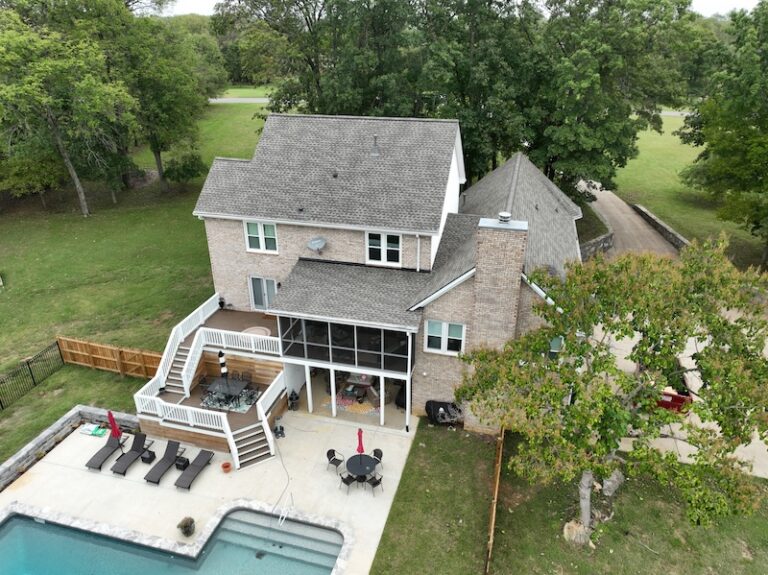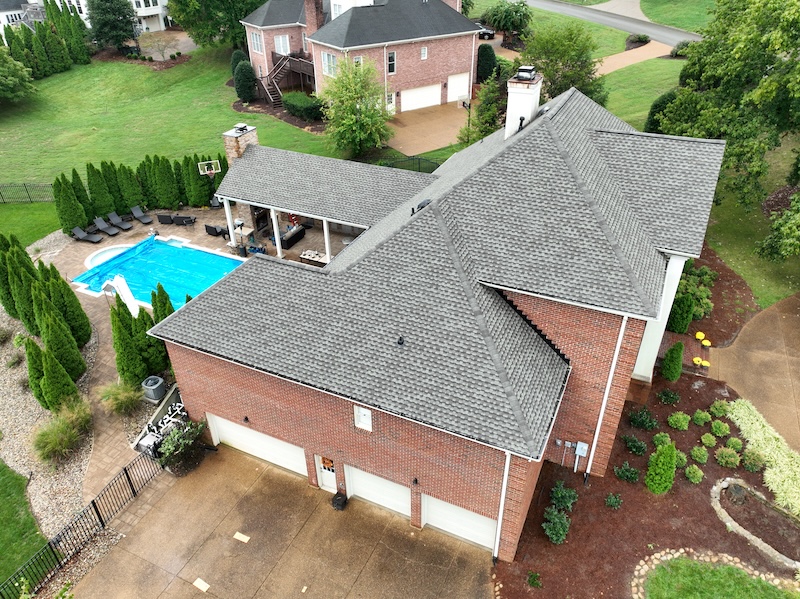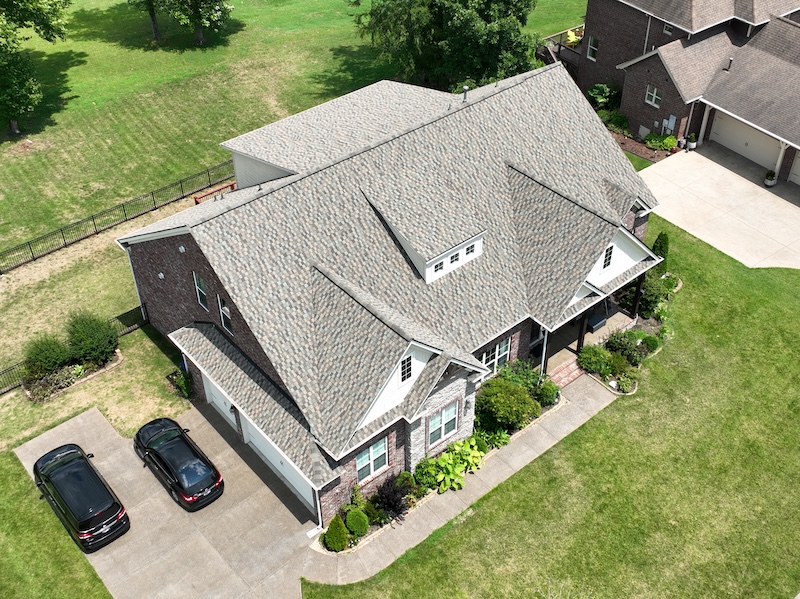What Voids a Roof Warranty? Minor Storm Damages and More
Roof replacements are expensive, often costing $5,800 to $47,000 or more depending on materials and square footage. That’s why many homeowners rely on warranties to protect their investment. But coverage can disappear without warning if a warranty is accidentally voided.
In 2025 alone, over 700 tornadoes have already hit the U.S., and severe storms have damaged thousands of roofs across the country. Not all of that damage will be covered.
In this article, we’ll walk through the most common reasons roof warranties get voided, what’s typically excluded, and how you can keep your coverage intact. If you’ve had storm damage or recently made repairs, this guide will help you understand your rights before you’re stuck with the full bill.
What Will Void a Roof Warranty?
Most roof warranties have clear rules, and breaking them, even accidentally, can leave you without coverage when you need it most. While they’re designed to protect against manufacturing defects or installation mistakes, warranties often come with fine print that homeowners overlook.
Here are the most common ways you can void a roof warranty:
1. Ignoring Minor Storm Damage
This is one of the most common and costly mistakes. After a storm, it’s tempting to ignore what looks like small issues, such as missing shingles, lifted flashing, or tiny leaks. But many warranties require timely inspection and documentation of storm-related damage.
If you wait too long, even a fixable problem can grow worse and your claim may be denied. Always have your roof checked after major weather events, even if the damage seems minor.
2. Improper Installation
If the roof wasn’t installed according to the manufacturer’s instructions, the warranty likely won’t apply. That includes using the wrong number of nails, poor ventilation setup, or skipping protective layers like underlayment. Even the best materials can fail if installed poorly.
3. Hiring Unqualified or Non-Certified Contractors
Many manufacturers only honor warranties if the installation and repairs are done by certified professionals. Choosing a contractor without the proper credentials or experience can void the warranty, even if their work looks fine on the surface.
4. Unauthorized Additions or Modifications
Installing solar panels, satellite dishes, skylights, or anything that penetrates the roof must be done carefully. If a third party cuts into your roof without using approved methods or materials, you could void your warranty in one afternoon. Always check with your roofer before making any changes.
5. Skipping Routine Maintenance
Warranty or not, your roof needs care. Failing to clear debris, clean gutters, or inspect after storms is considered neglect. If damage occurs because of a clogged downspout or unnoticed leak, the manufacturer may refuse coverage.
6. Using the Wrong Materials for Repairs
Not all shingles, flashing, or sealants work together. If you or a contractor use unapproved products when repairing your roof, it can affect performance and void your warranty. Ask your roofer to confirm all materials are manufacturer-approved.
7. Poor Attic Ventilation or Insulation
Roof warranties often require proper attic airflow to prevent moisture buildup and heat damage. If your attic is trapping warm, humid air, it can warp your shingles, rot the roof deck, or grow mold. These issues usually aren’t covered if they result from bad ventilation.
Does Walking on a Roof Void the Warranty?
Walking on a roof doesn’t automatically void your warranty, but it can if it causes visible or structural damage. Most manufacturers and contractors warn against walking on roofing materials (especially asphalt shingles) because it can loosen granules, cause cracking, or disrupt the seal. If the damage can be traced back to foot traffic, your warranty claim may be denied.
Some warranties specifically exclude damage caused by “misuse,” which can include walking on areas not designed for foot access. This is especially true for steep or fragile roofs where the material is more susceptible to wear.
That said, contractors and inspectors routinely walk roofs as part of their job. The key difference is that they’re trained to do it safely and in a way that avoids damage. If you need to access your roof, it’s best to use a professional, or, at the very least, consult your warranty terms to see if access is permitted and how.
How to Avoid Problems:
- Never walk on the roof unless it’s absolutely necessary
- Use a professional for inspections, cleaning, or repairs
- Keep photo evidence of your roof’s condition before and after any work is done
Even minor issues caused by walking (like cracked tiles or dislodged shingles) can give the manufacturer or installer grounds to deny future claims. When in doubt, stay off the roof.
What Are Conditions of Warranty Void?
Warranties are legally binding agreements, but they come with conditions. Breaking those conditions, intentionally or not, can cancel your coverage.
Here’s what typically voids a roof warranty:
Failure to Register the Warranty
Some warranties require homeowners to register the product within a specific timeframe. Skipping this step can make the warranty inactive from the start. Always confirm registration is complete after a new installation or repair.
Not Following Maintenance Requirements
Warranties often require routine maintenance, like debris removal, gutter cleaning, or inspections after storms. If you skip these tasks, a manufacturer may argue that you failed to protect your roof.
Unreported Property Transfers
If you sell your home or transfer ownership and don’t notify the warranty provider, the warranty may no longer apply. Many warranties include transfer clauses, but they often require registration or approval to remain valid.
Skipping Inspections After Installation
Some contractors include inspection timelines in their workmanship warranty. If you don’t follow through, especially after storms or within required intervals, any future damage may not be covered.
Unauthorized Modifications or Repairs
Adding features like skylights, solar panels, or satellite dishes without approval can void the warranty. So can using non-approved materials or hiring uncertified contractors for repairs.
These voiding conditions are usually spelled out in the warranty documentation. The Magnuson-Moss Warranty Act protects you from unreasonable or undisclosed clauses, but that doesn’t apply if you violate clearly listed requirements.
Do Repairs Void the Warranty?
They can, but not always. Repairs only void a roof warranty when they’re done incorrectly, with non-approved materials, or by someone who isn’t certified. Many warranties clearly state that any work on the roof must follow the manufacturer’s standards.
If it doesn’t, the warranty provider can deny coverage for future problems, even if the issue isn’t directly related to the repair.
DIY fixes are a common cause of this issue. Sealing a small leak yourself with store-bought caulk might seem harmless, but if that area later fails, the warranty provider can argue it was tampered with. The same risk applies to using leftover materials that don’t match the original roof system or aren’t listed as compatible in the manufacturer’s guidelines.
Even licensed roofers can void a warranty if they aren’t authorized by the product manufacturer. Before approving any roof work, confirm that:
- The contractor is certified for your specific roofing brand
- The materials they plan to use are approved by the manufacturer
- The repair method follows warranty instructions
One wrong step can shift liability from the manufacturer to you, so don’t take chances with who does the work or how.
How to Prevent Voiding Your Roof Warranty
Protecting your warranty starts with awareness and ends with documentation. Here’s how to stay covered:
Hire Certified Contractors Only
Look for roofing companies that are trained and certified by the manufacturer. Many brands have a preferred contractor program, and using one of these pros helps keep your warranty valid. Never assume all licensed roofers are warranty-approved.
Get Regular Roof Inspections
Schedule inspections once a year and after major storms. Some warranties require periodic checks to remain active. These visits help catch small issues before they become warranty risks. Keep the inspection reports and date-stamped photos.
Maintain Attic Ventilation and Insulation
Excess heat and moisture in the attic can lead to problems that aren’t covered by your warranty. Ensure vents are clear, insulation is intact, and airflow meets the specs listed in your roof system’s manual.
Act Quickly on Repairs
Don’t sit on small leaks or damaged shingles. Waiting too long can disqualify you from coverage, even if the original issue was covered. Call a certified roofer as soon as you notice damage.
Keep Detailed Records
Save everything, such as receipts, inspection reports, photos, contractor certifications, and product registrations. If you ever need to file a claim, this documentation can make the difference between approval and denial.
Protect Your Warranty (And Your Roof) With a Complimentary Evaluation from Bluebird Roofing
Warranties can offer peace of mind, but only if you stay ahead of the fine print. If your roof has gone through a storm, repair, or upgrade (even something small), it’s worth checking that your warranty is still in good standing.
At Bluebird Roofing, our team knows what to look for and how to help. We’ve installed over 6,000 roofs across Middle Tennessee, and we offer complimentary evaluations to make sure yours is still protecting what matters most.
Our evaluations check for:
- Minor and hidden storm damage that could void your warranty
- Past repairs that may not meet manufacturer standards
- Ventilation, flashing, and drainage issues that could compromise coverage
Request your complimentary evaluation today.
Let’s make sure your roof, and your warranty, are doing their job.




